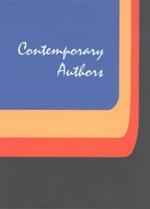|
This section contains 397 words (approx. 2 pages at 300 words per page) |
World of Scientific Discovery on Samuel Chao Chung Ting
Ting was born in Ann Arbor, Michigan, on January 27, 1936, the son of a Chinese student studying at the University of Michigan. He returned with his family to Taiwan at an early age, only to return to Ann Arbor as a student himself in 1956. Over the next six years, he earned his bachelor's, master's, and doctoral degrees at Michigan. Because of his interest in particle physics, he spent a year at the European Organization for Nuclear Research (CERN) before accepting an appointment at Columbia University in 1965. A year later, he became a group leader at CERN. In 1969, he moved to the Massachusetts Institute of Technology (MIT), where he was appointed the first Thomas Dudley Cabot Institute Professor in 1977.
Ting spent part of his time in 1974 working at the Brookhaven National Laboratory. He was particularly interested in studying the production of electron- positron pairs with energy greater than one billion electron volts. His studies involved the use of Brookhaven's 6.0 billion-electron-volt synchrotron to bombard a beryllium target with electrons.
One result of this research was the discovery of an entirely new subatomic particle, one with a very large mass, three times greater than that of the hydrogen atom, and a lifetime a thousand times greater than any known meson. The particle turned out to have all the properties that were expected in one containing the charm quark, predicted by Sheldon Glashow and his colleagues some years earlier. The charm quark is one of six types of quark which, along with leptons, are believed to be the fundamental particles of which all matter is made. Ting suggested the name "J" for the new particle.
The same particle was discovered almost simultaneously at the opposite end of the continent by Burton Richter and his colleagues at the Stanford Linear Accelerator Center, and named the psi () particle. Because of the joint discovery, the particle is now known as the psi/J (/J) particle. For their joint discovery, Ting and Richter shared the 1976 Nobel Prize in physics.
Ting remains the Thomas Dudley Cabot Institute Professor at MIT. In addition, with funding from NASA's Department of Energy Research, he serves as director of an international experiment using a new particle physics detector called the Alpha Magnetic Spectrometer (AMS). The detector will fly to the International Space Station to study the properties and origin of cosmic particles and nuclei, including dark matter and antimatter.
|
This section contains 397 words (approx. 2 pages at 300 words per page) |


